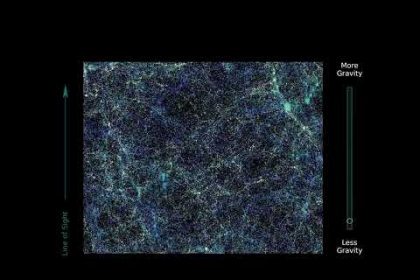Highly detailed 3D maps of cancer cells are revealing the secrets of how tumors grow, and mapping cancer evolution with cellular resolution could open the way to early cancer diagnosis and treatment, scientists say.
According to Isnadetailed maps that pinpoint the location of cells in tumors and examine tumor biology provide insights into the development of several types of cancer, including breast, colon, and pancreatic, and could lead to potential treatments.
In part of 12 papers published in the journal Nature on October 30, 2024, researchers from the Human Tumor Atlas Network (HTAN) analyzed hundreds of thousands of cells from human and animal tissues.
Some of these studies describe three-dimensional maps of cells known as “cell atlases” in tumors, while others create “molecular clocks” that track the cellular changes that lead to cancer.
“Applying these new tools to cancer allows us to look at them through a different lens,” says Ken Lau, a computational cell biologist at Vanderbilt University Medical Center and co-author of a study documenting cellular timing. to do We can actually see things we couldn’t see before.
Tumor drawing
In some of these studies, researchers created atlases that allowed them to study tumors at single-cell resolution and investigate how cancer begins.
A team analyzed the organization of cells in 131 samples from six types of cancer, including breast, colon, pancreas, and kidney.
Scientists have discovered that distinct areas in a tumor can respond differently to drugs.
Understanding how different clusters of cancer cells respond to treatments can help researchers design more effective treatments.
Other studies used 3D mapping and mapping to study samples of colon polyps. A polyp is an abnormal growth in the lining of the intestine that can become cancerous.
The researchers identified molecular changes in polyp cells, including loss of DNA binding and changes in gene activity, as well as changes in immune response, cell growth, and hormone metabolism, that occur early and can cause polyp cells to become cancerous.
“Treatments that target these changes could make cancer treatments and early health interventions more effective,” says Ömer Yilmaz, a stem cell biologist at the Massachusetts Institute of Technology.
He added: The best treatment for cancer is its prevention, and if we can understand how different cell populations react to the environment and diet, what affects the initiation of a tumor, and how different clones play a role in this process, we can Better methods of prevention or diagnosis have arrived.
Safety Insights
Other atlases provide clues as to why some types of cancer are more challenging to treat than others.
Daniel Abravanel, a physician and scientist at the Dana-Farber Cancer Institute in Boston, Massachusetts, and one of the authors of a study on breast cancer, says: Tumors are not just made up of cancer cells. For example, immunotherapies do not target cancer cells directly, but instead aim to help the immune system destroy them, and are not as effective against other types of breast cancer treatment.
To investigate why, Abravanel and his colleagues created a 3D tumor atlas using dozens of samples from 60 people with aggressive types of breast cancer. They studied the distribution of immune cells and found that certain types of immune cells were more common than others in certain tumors, particularly in people who had received immunotherapy.
For three people, biopsies taken from the same tumor 70 to 220 days apart showed differences in the levels of immune cells called T cells and macrophages. In two cases, the number of these cells decreased over time, while in the third case, it increased.
“This really shows how dynamic the immune microenvironment is, and could explain why efforts to characterize tumors and predict responses to treatments from a Sampling at a single time point has had conflicting results.
In another study, researchers found that some aggressive subtypes of breast cancer have more immune cells than others and appear to “wear out” over time. These cells expressed a protein called CTLA4, which limits their ability to respond to tumors.
Therapies targeting CTLA4 have shown promising results in the treatment of melanoma and lung cancer.
This opens up more ways to use that treatment in a subset of breast cancers, Lehmann says.
Crisper watch
Other experiments provide insights into how cells become cancerous in the first place.
Studying colon cancer, Lao and colleagues engineered a “molecular clock” to track how normal cells start to rebel and multiply uncontrollably in the gut. They used single-cell analysis and the CRISPR gene editing tool to create mutations in each cell’s DNA.
These mutations acted as time stamps, recording a timeline of each cell’s changes and divisions.
Lao and his team applied this approach to 418 human colon polyps and found that up to 30 percent of the polyps originated from multiple cell types, not from a single cell.
In 60% of polyps, a group of cells started to “overtake” other cells and turned into a tumor with the growth of the polyp.
Two similar studies in mice involving the analysis of 260,922 individual cells from 112 intestinal tissue samples showed that a combination of cells collectively initiated colon tumors.
These findings overturn the previous notion that colon cancers arise from single rogue cells in the intestinal lining and could open opportunities for early detection and intervention.
In assessing the risk of precancerous growths, the larger the tumor, the greater the risk, but the molecular clock and other analyzes suggest that there may be other biomarkers in terms of genetics and evolution, Lao says.
end of message
RCO NEWS

















